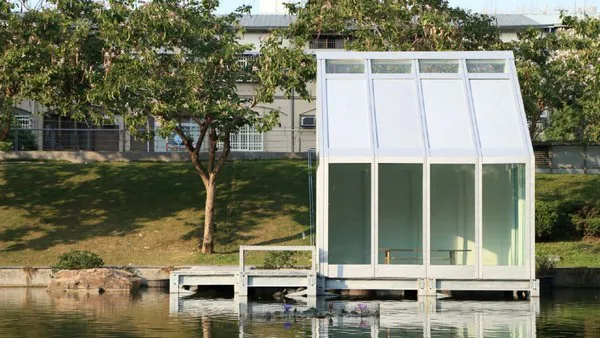Almost everyone knows that heating and cooling buildings is not only expensive, but a massive issue due to the resulting carbon emissions. According to the UK Green Building Council, the built environment contributes around 40% of the UK’s total carbon footprint – with heating alone contributing to 10% of the total.
To tackle the carbon issue, Dr Matyas  Gutai says we need to turn attention to improving windows. Though the area they occupy may be small on a building, their insulation capacity is much worse than a normal wall surface and small changes can lead to up to 25% energy savings for the whole building.
Gutai says we need to turn attention to improving windows. Though the area they occupy may be small on a building, their insulation capacity is much worse than a normal wall surface and small changes can lead to up to 25% energy savings for the whole building.
The School of Architecture, Building and Civil Engineering academic says he has found a material that can save more energy than current technologies on the market – including double and triple glazing: Water.
Dr Gutai has been researching the concept for over a decade and his latest study, published in Elsevier's Energy and Buildings Journal in collaboration with Dr Abolfazl Kheybari, of the University of Kaiserslautern, demonstrates how ‘water-filled glass’ (WFG) can revolutionise building design and performance when used as part of a wider heating system.
The research reveals that WFG systems perform well in any inhabited climate – keeping buildings in hot climates cool, and buildings in cool settings warm – without requiring an additional energy supply, highlighting the technology’s potential to make a real splash when it comes to reducing carbon emissions.
What is water-filled glass?
WFG involves a sheet of water being trapped between a panel of glass, and the water is practically invisible.
Dr Gutai developed the concept while studying for a PhD at the University of Tokyo after being inspired by Japanese outdoor baths – known as ‘rotenburo’ – which are used also during the winter as the water’s thermal properties keep us warm.
 Water-filled glass panel prototypes.
Water-filled glass panel prototypes.
Dr Gutai developed the idea into a working design and then created two prototype buildings in different climates - Hungary and Taiwan – that use WFG as part of a larger mechanical system.
The WFG system involves connecting the water-filled window panels to a storage tank using pipes hidden in the walls, so fluid can circulate between the two. This system allows the ‘Water Houses’ to cool and reheat themselves, without needing an additional energy supply for most of the year.
When it is warm, the buildings stay cool as the water absorbs external and internal heat; this warm water is then circulated to the storage tank– which can either be in the foundations or placed somewhere in the building.
The heat is stored in the tank and, if the temperature drops, it can be brought back to the walls to reheat the building using a monitoring system similar to central heating. Alternatively, the stored heat can be used for hot water supply.
 The Water House prototype building in Taiwan.
The Water House prototype building in Taiwan.
The reason why this process saves energy is because water absorption and pumping take much less energy than HVAC systems (heating, ventilation, and air conditioning).
The technology also has other benefits, including acoustics, less need of ‘shading’ (methods used to avoid overheating and the greenhouse effect), and there is no need to colour the glass to improve energy efficiency, so it has aesthetic benefits too.
Dr Gutai has developed a more sophisticated version of the system by adding a heat pump, which can heat and cool the water depending on the season – and this is the system he examines in the latest research paper.
For more information:
Loughborough University
Epinal Way
Loughborough
Leicestershire LE11 3TU
+44 (0)1509 222222
enquiries@lboro.ac.uk
www.lboro.ac.uk
